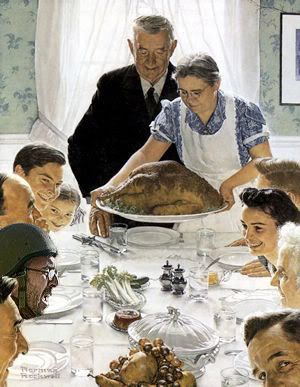
Posted on 08/09/2006 6:21:22 AM PDT by COUNTrecount
Editor’s note: Reuters.com asked Gary Hershorn, News Pictures Editor for North America, to discuss some of the tools photojournalists have used in the past — and what they use now — to produce pictures. On Monday, Reuters withdrew all 920 photographs by a freelance Lebanese photographer from its database after a review showed he had altered two images. You can see the images and reactions from readers here. Reuters, also the publisher of this report, tightened procedures for photographs from the conflict between Israel and the armed group Hizbollah and apologized for the case. You can read the company’s statement here. You can send a comment to Hershorn from the link below and read his interview with NPR today here)
Photojournalism tools
News photographers routinely process images using Adobe Photoshop software. But there has been a basic premise in the world of photojournalism that what was allowed in making prints in the pre-digital days of darkrooms is all that is acceptable today.
Back in the days of the darkroom, we used very basic tools to develop prints. In black and white printing, the contrast of a picture was controlled by a paper’s grade. The higher the number of the paper, the higher the contrast. In the wire agency darkooms I’ve worked in, we typically used grades 3,4 and 5. We allowed “dodge and burn” to lighten or darken areas. A dodge tool was made by taping a small piece of cardboard the size of a quarter onto a paper clip. A burn tool was a piece of cardboard the size of an 8×10 sheet of paper with a hole in the center. If a print had dust spots caused by a dirty negative, we used Spotone, a photographic paint that was dabbed onto a print with a very fine paint brush to eliminate the unsightly marks.
One other tool that was allowed when printing color pictures was changing color balance. This was done by placing filters between the light source of the enlarger and the paper that the image was being printed on.
When we moved to scanning negatives and then to shooting digital, we began using Photoshop. This program allows us to do the same things we did in the darkroom. Changes in contrast, dodging and burning and color balance are now done with software. The most controversial tool in Photoshop that we use is the cloning tool. The only accepted use of this tool is to clear dust from the image. We have a zero tolerance policy when it comes to using the cloning tool to change content, and by that we mean removing something that exists in a photo, moving or replicating it or adding to a photo.
The tools we use in Photoshop are levels, curves and saturation for changing contrasts; and, color balance to bring the image back to the way the natural eye would see the color. Here is what we tell our photographers in the Handbook of Reuters Journalism.
Photoshop is a highly sophisticated image manipulation programme. We use only a tiny part of its potential capability to format our pictures, crop and size them and balance the tone and colour. For us it is a presentational tool.
The rules are – no additions or deletions, no misleading the viewer by manipulation of the tonal and colour balance to disguise elements of an image or to change the context.
Photoshop is a powerful image processing program with many more tools to help photographers produce the best quality image they can for the type of photography they do. There is not a Photoshop program for use by news photographers and another for advertising, where image-changing is tolerated. What we in the news photo community need to regulate is what tools are used for photojournalism and what are not.

.
.
Tourist guy isn't in the scene.
Feel free to add to the list.
Reuters ?
Rathers ?

Photoshop or not... You make the call.

LOL
Yeah right.

A stroll down Memory Lane?

The disturbing make believe photos from this disturbing make believe event are shown below. Don’t allow children under the age of 30 to view this horror caused by Israel. Of course, this is Bush's fault.
%20copy.jpg)
No Problem! Here comes your Bomb!














Yep.
"What we in the news photo community need to regulate is what tools are used for photojournalism and what are not."
Since we can no longer foist easily detected manipulations on an unsuspecting public.
Isn't it amazing how quickly some people get "ethics"...AFTER THEY'VE BEEN CAUGHT!
If you set a faked scene well enough, you don't need photoshop.
That photo of the green helmet dude with the pancake on his head is AWESOME! LOL
There are so many examples we forget them all.
Not to speak of the CNN black X over Cheney's face.
Which wasn't fotoshopping. Just adolescent vitriol.
We have such great graphic arts Freepers.
The left had better pray that we don't buy out some dying pseudo news company. If we did, they would be faced with these disturbing pictures 24/7.
bump
On a more serious note. I have it on good authority that the Washington Post took photoshop off their photographers' laptops and replaced it with photoshop elements in an attempt to limit what they could do in the field.
Disclaimer: Opinions posted on Free Republic are those of the individual posters and do not necessarily represent the opinion of Free Republic or its management. All materials posted herein are protected by copyright law and the exemption for fair use of copyrighted works.